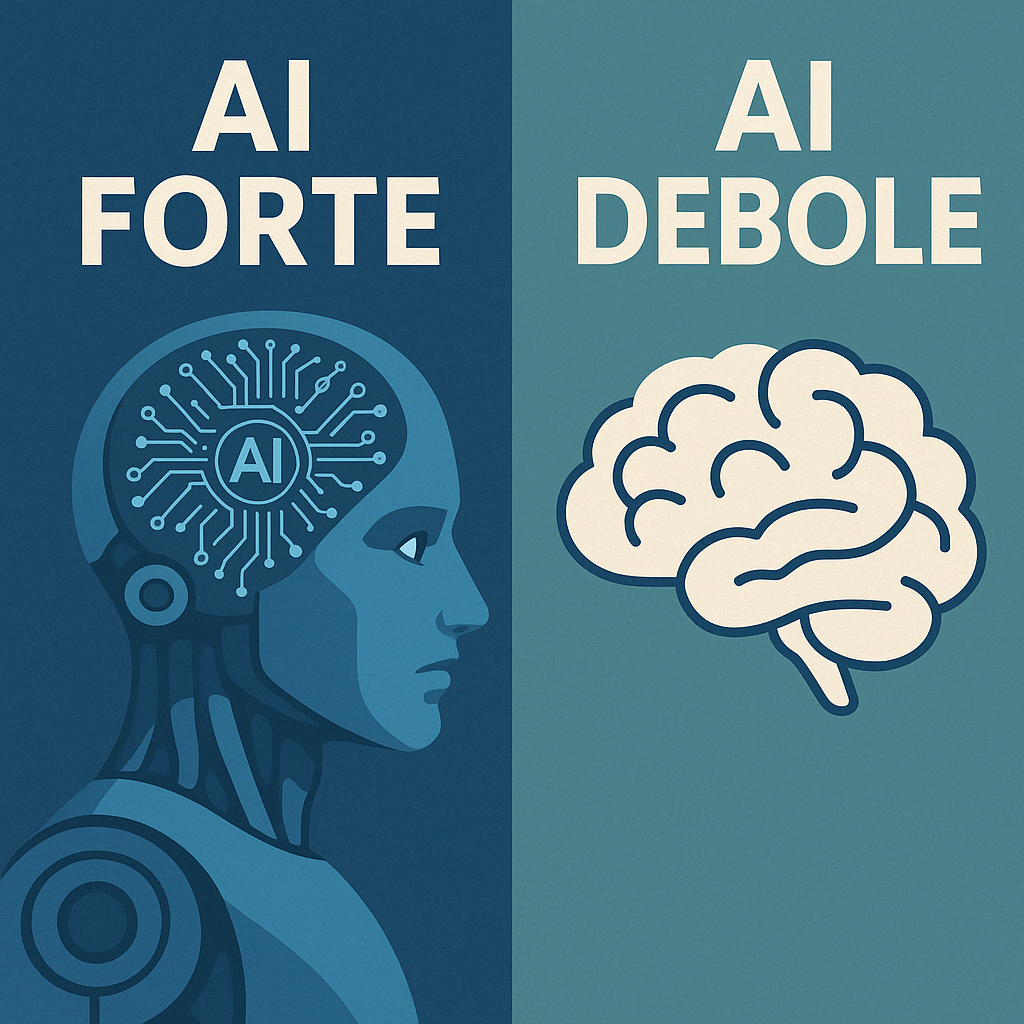Strong AI and Weak AI – differences and future developments
- Definition of Weak AI
- Definition of Strong AI
- Differences between Weak AI and Strong AI
- Training Models for Weak AI
- Training Models for Strong AI
- FAQ
Definition of weak AI
Weak AI, often called narrow AI, refers to systems designed to carry out specific tasks without any general understanding or self-awareness. The term “weak” does not necessarily mean limited performance: many such systems are extremely powerful in their area of expertise. Have you ever noticed, for instance, that ChatGPT sometimes forgets questions you asked two or three turns earlier and repeats a previous mistake while answering the next one? That is weak AI—a system trained for certain tasks but lacking self-awareness or advanced reasoning over every possible case. Some examples of weak AI:- Facial-recognition algorithms
- Automatic-translation software
- Customer-service chatbots or recommendation engines (Netflix, YouTube, Amazon)
- Virtual assistants like Siri and Alexa
Definition of Strong AI
Strong AI, by contrast, refers to systems endowed with a level of intelligence comparable to that of humans, featuring general-purpose reasoning, the ability to learn autonomously across different contexts, nuanced language understanding and—according to some definitions—even a form of self-awareness. This concept is also known as AGI (Artificial General Intelligence). As intriguing as it is, strong AI remains largely theoretical. Despite remarkable advances in machine learning in recent years, no system yet qualifies as a fully fledged “artificial mind.”
Differences between weak AI and strong AI
The key distinction lies in the breadth and depth of the intellectual abilities each aims to reproduce or simulate:- Breadth: a weak AI is designed to operate in a narrow domain with well-defined tasks (e.g., classifying images of animals). A strong AI, instead, strives for general understanding, adapting to heterogeneous contexts.
- Depth: weak AI does not truly “understand” what it processes but merely correlates inputs and outputs. Strong AI should rely on cognitive mechanisms comparable to human ones, with possible ethical implications.
- Degree of autonomy: a weak-AI system needs precise instructions and a specific domain. In theory, a strong AI would be able to self-update and learn from any environment.
Training Models for Weak AI
The success of weak AI is tied to advances in machine learning and deep learning, which use several training paradigms:- Supervised learning: the model is given labelled examples (input–output pairs) and learns to generalise (e.g., image recognition).
- Unsupervised learning: the model receives no labels and searches for patterns or clusters in the data (e.g., customer segmentation).
- Reinforcement learning: inspired by behavioural psychology, the model is rewarded for correct actions and penalised for wrong ones (e.g., AlphaGo).
Training approaches for strong AI
Although there is still no single recipe for strong AI, several research avenues aim to extend current methods:- Hybrid symbolic–connectionist approach: combines neural networks (connectionist) with symbolic systems (logical rules) to merge statistical correlations with logical reasoning.
- Brain-inspired cognitive systems: attempt to replicate the brain’s architecture—including specialised neurons and synapses—to achieve emergent intelligence.
- Computational-mind theories: mathematical models that include higher aspects of cognition such as metacognition, long-term memory, and emotions.
FAQ
What is the main difference between strong AI and weak AI?
Strong AI (or AGI) aims for general intelligence, able to understand and solve any problem autonomously and consciously; weak AI (or narrow AI) is built for single tasks—where it can outperform humans—yet has no consciousness or out-of-domain adaptability.
What is meant by strong AI?
Strong AI refers to a system endowed with artificial general intelligence: it understands language, reasons in open contexts, learns in a self-supervised way and possesses a form of self-awareness comparable to the human kind.
What is weak AI?
Weak AI (or narrow AI) is a specialised algorithm that excels at a single function—e.g., face recognition, text translation or video recommendation—without consciousness or deep understanding of the world.
What are the four AI levels?
According to Hintze’s 2016 taxonomy:
- Reactive machines – react to current stimuli only, no memory (e.g., Deep Blue).
- Limited memory – learn from recent past (e.g., self-driving cars).
- Theory of mind – understand others’ emotions and intentions (still theoretical).
- Self-aware – conscious of themselves and their internal state (future AGI).
What are synonyms for weak AI?
Weak AI, Narrow AI, ANI (Artificial Narrow Intelligence), restricted AI, specialised AI, reactive AI.
What is the main limitation of weak AI?
It cannot transfer knowledge beyond the task it was trained for: it lacks broad generalisation, semantic understanding and the cognitive flexibility of a human mind or future AGI.